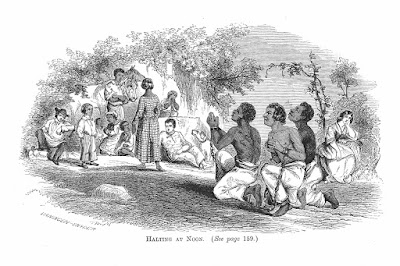Topics: African Americans, Civil Rights, Diaspora, Diversity, Diversity in Science, History, Women in Science
Without modification, the title is the name of a book in the NY Review of Books. Apropos, considering the times we live in.
It's interesting that my Alma Mater was birthed in 1891, some 27 years after the end of the Civil War. It has established itself as a primary source of STEM graduates, and still graduates more African American engineers than any other institution.
Others, some noteworthy have a more sullen history. It is thus understandable, that the institution of white supremacy had in its underpinnings self-regulated "justifications" from clergy and academia. It makes a "self-evident truth" that white culture has clung to as its only solace in an unfair system even to themselves. It is a faux orthodoxy that has prepared us for this unique moment of authoritarian fascism.
We were in Tennessee (Bill Moyers as a young staffer with President Lyndon B. Johnson). During the motorcade, he spotted some ugly racial epithets scrawled on signs. Late that night in the hotel, when the local dignitaries had finished the last bottles of bourbon and branch water and departed, he started talking about those signs. “I’ll tell you what’s at the bottom of it,” he said. “If you can convince the lowest white man he’s better than the best colored man, he won’t notice you’re picking his pocket. Hell, give him somebody to look down on, and he’ll empty his pockets for you.” Source: Snopes - LBJ: convince the lowest white man quote
According to the surviving records, the first enslaved African in Massachusetts was the property of the schoolmaster of Harvard. Yale funded its first graduate-level courses and its first scholarship with the rents from a small slave plantation it owned in Rhode Island (the estate, in a stroke of historical irony, was named Whitehall). The scholarship’s first recipient went on to found Dartmouth, and a later grantee co-founded the College of New Jersey, known today as Princeton. Georgetown’s founders, prohibited by the rules of their faith from charging students tuition, planned to underwrite school operations in large part with slave sales and plantation profits, to which there was apparently no ecclesiastical objection. Columbia, when it was still King’s College, subsidized slave traders with below-market loans. Before she gained fame as a preacher and abolitionist, Sojourner Truth was owned by the family of Rutgers’s first president.
From their very beginnings, the American university and American slavery have been intertwined, but only recently are we beginning to understand how deeply. In part, this can be attributed to an expansion of political will. Barely two decades ago, questions raised by a group of scholars and activists about Brown University’s historic connection to slavery were met with what its then-president, Ruth Simmons, saw as insufficient answers, and so she appointed the first major university investigation. Not long before that, one of the earliest scholars to independently look into his university’s ties to slavery, a law professor at the University of Alabama, began digging through the archives in part to dispel a local myth, he wrote, that “blacks were not present on the campus” before 1963, when “Vivian Malone and James Hood enrolled with the help of Nicholas Katzenbach and the National Guard.” He found, instead, that they preceded its earliest students, and one of the university’s first acts was the purchase of an enslaved man named Ben. In Virginia, a small consortium founded three years ago to share findings and methods has expanded to include nearly three dozen colleges and universities across North America and two in European port cities. Almost all of these projects trace their origins to protests or undergraduate classes, where a generation of students, faculty, archivists, activists, and librarians created forums for articulating their questions, and for finding one another.
Slavery and the American University, Alex Carp, New York Review Daily

Comments